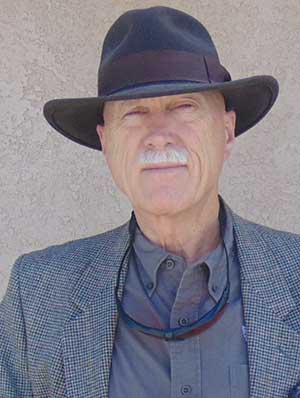
Arizona -(Ammoland.com)- The mass murder in Dayton Ohio appears to have started with the killing of the perpetrator’s sister and the wounding of her boyfriend. Several rampage murders have started with the killing of relatives. Ideologically motivated rampage murders seldom do. Images of the firearm used have been released by the Dayton Police Department.
The firearm appears to be a pistol customized from an Anderson AM-15 lower receiver and other parts, including a blade arm brace. The AM-15 is not a typo. The AM stands for Anderson Manufacturing. The AM-15 was ordered from Texas, online, and delivered to a local Ohio federal firearms dealer. It is unknown where the other parts were added to the receiver. They could have been added in Texas, or they could have been added by the murderer. A receiver can be made into different types of firearms, depending on what parts are added.
The AR in AR-15 stands for ArmaLite Rifle, or for the first two letters of ARmaLite. The system was invented by Eugene Stoner in 1955. Over the last 64 years, Americans have come to realize the advantages of the AR system. After the patents ran out in 1977, numerous companies made parts for AR-pattern firearms. Most of the parts are interchangeable. As noted on the AM-15 lower receiver, different calibers can be used with the system, with appropriate changes of the upper receiver, bolt head, and magazines.
The legal definition of a pistol in the United States includes AR-15 type pistols.
Because of the bizarre law involved in the National Firearms Act (NFA) of 1932, and later interpretations, there are several types of firearms defined by law. Rifles must have a rifled barrel of at least 16 inches in length. Shotguns must have a barrel at least 18 inches in length. Both rifles and shotguns have to be designed to be fired from the shoulder, with a stock.
Firearms that are not designed to be fired from the shoulder, but are over 26 inches in length, can be designated “firearms”.
Pistols must be designed to be fired with one hand, without a stock. Firearms that have a stock and a rifled barrel less than 16 inches in length are called short-barreled rifles (SBRs). Shotguns that have a stock and a barrel less than 18 inches in length are called short-barreled shotguns (SBSs).
If a firearm is designed to be fired with one hand, it can have a pistol brace attached to aid in firing it with one hand. The AM-15 appears to have a pistol brace attached to the buffer tube of the pistol. The barrel is too short to be considered a rifle. Because there is no stock, the firearm is a pistol, not an SBR.
This illustrates how ridiculous the National Firearms Act of 1932 and its regulations have become.
There isn’t any logical reason to legally differentiate between a pistol over 26 inches long and a rifle or shotgun or any other firearm over 26 inches long.
The 26-inch figure is a rough measure, a dividing line between concealable and less concealable firearms.
The divide exists because long guns are seldom used in a crime, while handguns are routinely used in crime. The push for citizen disarmament, in the 1960s, was to register and ban handguns. The citizens were repeatedly told that no one was interested in registering and banning rifles or shotguns.
Two things changed that. First, Josh Sugarman of the Violence Policy Center hit on the idea of pushing for a ban on “assault weapons” in 1988. He did so, he stated because the public could be manipulated to confuse “assault weapons” with machine guns. The media took up the cause, and mass killing with firearms started climbing. Twenty years later, in 2008, the Supreme Court confirmed the Second Amendment protected an individual right to keep and bear arms. The Heller case, which confirmed Second Amendment rights, was about handguns.
This presents a conundrum for those pushing for a disarmed population. Handguns are obviously protected arms under the Second Amendment, as written in Heller. Any fair reading of Heller shows all bearable arms are protected, but those pushing for a disarmed population try to limit the case to handguns.
To do an end-run around the Second Amendment, activists push for a ban on semi-automatic rifles, while specifically excluding semi-automatic pistols, as in the current petition to amend the Florida state constitution.
The AM-15 found in Dayton shows how impractical such a ban would be. It illustrates how silly the entire NFA was and has become.
All the legalisms about barrel lengths and stocks should be scrapped. If legislators believe concealable weapons pose more of a threat because they are used in crime more frequently, they could reform the law to make concealability the criteria.
The 26-inch length is already part of the law. If we are to continue the dubious distinction between concealable and not concealable, let us draw the line at 26 inches. More than 26 inches, it should fall under the current rules for rifles and shotguns. Less than 26 inches, call it concealable.
Better yet, repeal those restrictions. They never made much sense. If you are forbidden from owning a firearm, you are forbidden from carrying one. If you can own one, you should be able to carry it without further legal requirements.
Such a system, called Constitutional Carry, is the law in 16 states. Crime rates in those states have not been affected.
About Dean Weingarten:
Dean Weingarten has been a peace officer, a military officer, was on the University of Wisconsin Pistol Team for four years, and was first certified to teach firearms safety in 1973. He taught the Arizona concealed carry course for fifteen years until the goal of constitutional carry was attained. He has degrees in meteorology and mining engineering, and recently retired from the Department of Defense after a 30 year career in Army Research, Development, Testing, and Evaluation.
